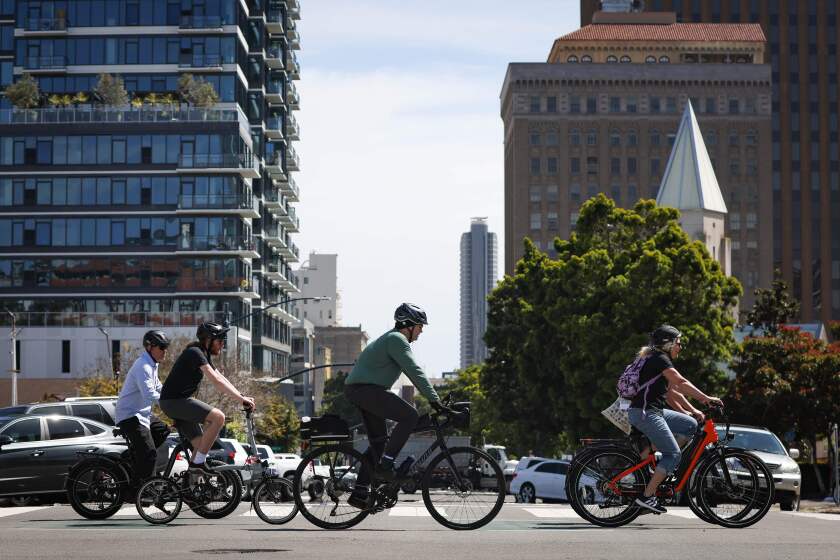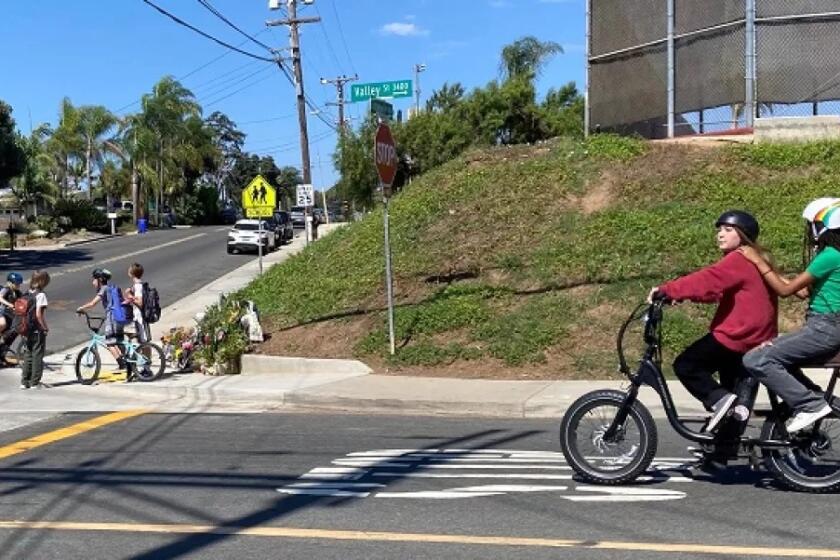Council reviews proposed city operating budget
The Encinitas City Council on May 31 began reviewing a proposed city budget for the next two years, which includes an increase to the general fund.
Proposed operating revenues for all city funds total $92 million for Fiscal Year (FY) 2017-18 and $95 million for FY 2018-19, according to a city document.
About 76 percent of the total combined city budget is the general fund, which pays for law enforcement, fire protection, parks, beaches and street maintenance. In FY 2017-18, the general fund is proposed to increase by 2.3 percent to $61.6 million. In FY 2018-19, it is proposed to increase an additional 3.8 percent to total $64 million.
Costs will cover items such as law enforcement services contracted with the San Diego County Sheriff; landscape and tree maintenance; base salary increases for city workers; $100,000 additionally to the Public Works Department each year for a city arborist consultant; and unfunded pension liability payments of $505,313 to CalPERS, according to city staff.
In public safety, fire operations is requesting replacement of thermal imaging cameras and marine safety is requesting additional swift water training and equipment. Public Works costs include enhanced tree maintenance services, storm drain asset inventory and downtown holiday lighting upgrades.
Within the general fund, 67 percent accounts for salaries, 19 percent accounts for retirement expenses, 9 percent accounts for flex benefits and 4 percent accounts for medicare, unemployment, workers’ compensation, long-term disability and life insurance.
City Finance Director Tim Nash said Encinitas is in one of the best positions regarding pensions compared to other cities, but Council member Mark Muir said Encinitas should still be cautious.
“I know you say we’re better than most, but that’s like saying we have the best seat on the Titanic,” he said.
In April, the city council at a planning session identified its top focus areas for the next two years: attain a legally compliant Housing Element; improve connectivity and mobility for all users; make the rail corridor a better neighbor; and promote green initiatives and protect natural resources.
Mayor Catherine Blakespear said the city should focus on proposed new trails, which currently will not be built for another four years. She requested those trails be moved up within the next two to three years to help improve quality of life.
“The cost is construction and design,” she said. “We don’t have to acquire the land. We just have to build it.”
Additionally, at the same April meeting, the city council identified its top priority project for funding in the six-year Capital Improvement Program (CIP), which contains $88.6 million in capital improvement/work projects over the next six years. Of the six-year total, $15.8 million is programmed for FY 2017-18.
These priority projects include rail quiet zones ($5 million); the North Coast Highway 101 Streetscape ($15,120,000); recreation trails and open space acquisition ($2,690,000); Beacon’s Beach access ($4,250,000); the El Camino Real Streetscape Study ($250,000); and a roundabout at Leucadia Boulevard and Hygeia Avenue ($2,050,000).
Council member Tasha Boerner Horvath said she believes the North Coast Highway 101 Streetscape should be the city’s top priority and should not be spread out over the course of years.
“There are negative side effects of not getting it done as soon as possible in terms of safety,” she said. “I think we can safely say that since the beginning of this project, traffic has increased significantly. It’s not a matter of if someone is going to get hurt. It’s a matter of when.”
Deputy Mayor Tony Kranz said the city should wait for its Environmental Impact Report (EIR) first before finalizing decisions regarding the Streetscape, with Council member Joe Mosca agreeing. Instead, Kranz advocated for the roundabout at Leucadia Boulevard and Hygeia Avenue.
Muir said the access to Beacon’s Beach should be expedited to decrease safety hazards.
“I don’t like knowing there’s a potential threat and not addressing it,” he said.
An additional $36.1 million of the CIP will pay for infrastructure maintenance projects, including street overlay ($17,400,000), waste water collection systems ($8,450,000), city facility major maintenance ($2,830,246), technology replacement ($2,376,060), governmental education access equipment update ($1,598,000) and drainage systems ($1,525,000).
The city’s operating budget is prepared two years at a time to “maximize efficiency,” according to a city document. Preparation of the two-year operating budget began in December.
The council unanimously instructed staff to make about a dozen adjustments to the budget before adoption, including planning a walking audit of El Camino Real with community members, evaluating and justifying the amount for tree maintenance, planning for open space savings, getting an estimate hardware for banners and holiday lights for El Camino Real, evaluating the Fourth Street pump and adding trails into the two-year budget.
The budget will be brought back for final council review on June 28, when it will be considered for adoption.
Sign up for the Encinitas Advocate newsletter
Top stories from Encinitas every Friday for free.
You may occasionally receive promotional content from the Encinitas Advocate.





